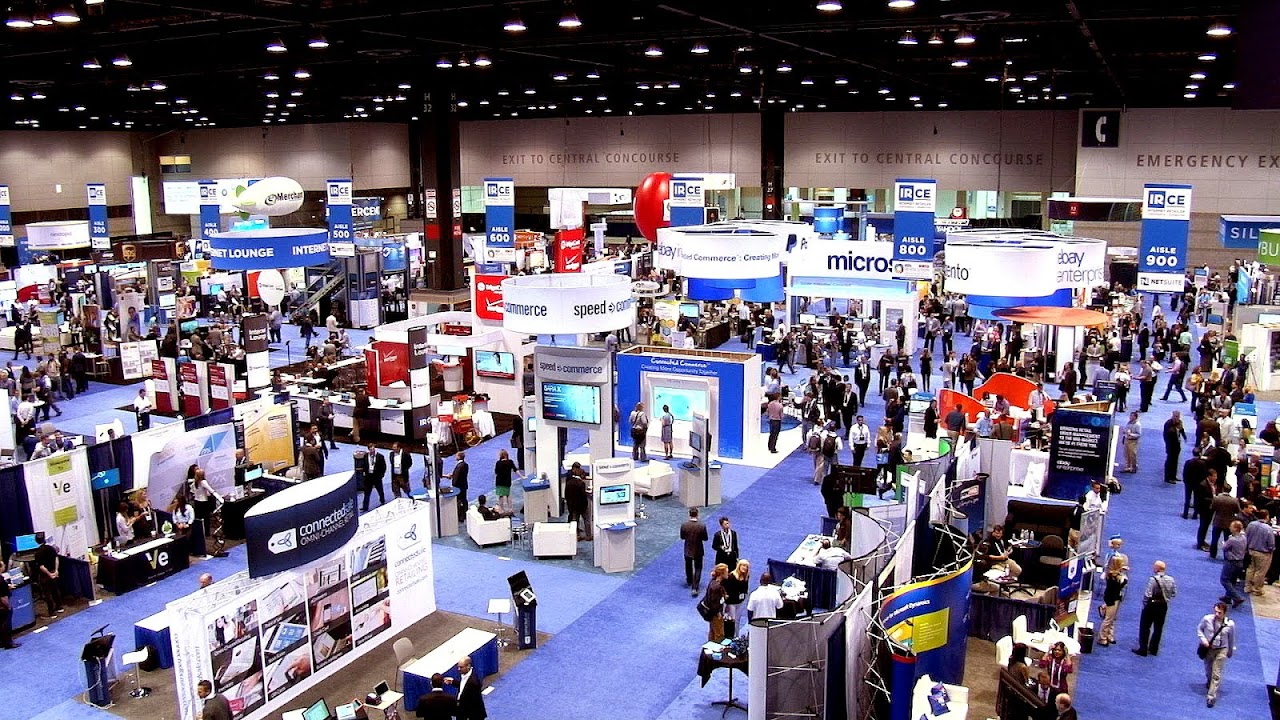
A trade fair (trade show, trade exhibition, or expo) is an exhibition organized so that companies in a specific industry can showcase and demonstrate their latest products and services, meet with industry partners and customers, study activities of rivals, and examine recent market trends and opportunities. In contrast to consumer fairs, only some trade fairs are open to the public, while others can only be attended by company representatives (members of the trade, e.g. professionals) and members of the press, therefore trade shows are classified as either "public" or "trade only". A few fairs are hybrids of the two; one example is the Frankfurt Book Fair, which is trade only for its first three days and open to the general public on its final two days. They are held on a continuing basis in virtually all markets and normally attract companies from around the globe. For example, in the U.S., there are currently over 10,000 trade shows held every year, and several online directories have been established to help organizers, attendees, and marketers identify appropriate events.

Maps, Directions, and Place Reviews
History
Modern trade fairs follow in the tradition of trade fairs established in late medieval Europe, in the era of merchant capitalism. In this era, produce and craft producers visited towns for trading fairs, to sell and showcase products. From the late eighteenth century, industrial exhibitions in Europe and North America became more common reflecting the technological dynamism of the Industrial Revolution.
In the late 19th century, the concept of annual industry-wide trade shows gained traction, spreading from European manufacturing centers to North America. By the 20th century, specialized companies came into existence simply to manage the trade-show industry, and permanent trade show grounds or convention centers were established as venues that featured a rotating calendar of trade shows.
In the 21st century, with the rapid industrialization of Asia, trade shows and exhibitions are now commonplace throughout the Asian continent, with China dominating the exhibitions industry in Asia, accounting for more than 55 per cent of all space sold in the region in 2011.
First Trade Show Video
Today
Trade fairs often involve a considerable marketing investment by participating companies. Costs include space rental, booth design and construction of trade show displays, telecommunications and networking, travel, accommodations, and promotional literature and items to give to attendees. In addition, costs are incurred at the show for services such as electrical, booth cleaning, internet services, and drayage (also known as material handling). Consequently, cities often promote trade shows as a means of economic development. Preparation and follow-up require considerable time that also has to be invested.
With four in every five trade show visitor being viewed as a prospective customer, companies allocate a significant budget to participating in such events. Technological advancements have brought graphic design and digital displays to the forefront. Costs may also include fun activities and games to attract visitors and increase brand recall after the conclusion of the event.
Exhibitors attending the event are required to use an exhibitor manual or online exhibitor manual to order their required services and complete any necessary paperwork such as health and safety declarations. An increasing number of trade fairs are happening online, and these events are called virtual tradeshows. They are increasing in popularity due to their relatively low cost and because there is no need to travel whether you are attending or exhibiting.
Large trade fair grounds:

List of major trade fairs
Source of the article : Wikipedia


EmoticonEmoticon